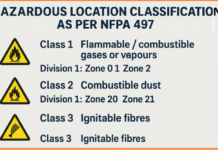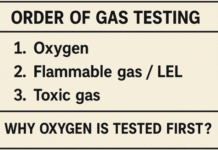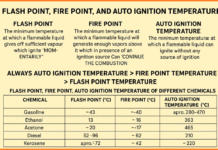Planning for safety is the most fundamental and the first function or element of management process. Other functions rest on it Need for planning is increasing because of changes in technology, materials, methods, processes, demands, law, government policy, procedure and competition.
Definitions of General Planning:
- Henryy Fayol – Planning refers to a preview of future activities.
- UrWick – It is fundamentally a mental predisposition to do things in an orderly way, to think before acting and to act in the light of facts rather than of guesses.
- Haynes & Massie – Planning is that function of manager in which he decides in advance what he will do. It is a decision making process of a special kind, its essence is futurity.
- Koontz and O’Donnell – It is an intellectual process, a conscious determination of course of action, the basing of decisions on purpose, facts and considered estimates.
- George R. Terry – Planning is the selecting and relating of facts and using of assumptions regarding the future in the visualization of formulation of proposed activities believed necessary to achieve desired goals.
- Dalton McFarland – It is defined as the activity by which managers analyze present conditions to determine ways of reaching a desired future stage. It embodies the skills of anticipation, influencing and controlling the nature and direction of change.
- Theo Haimann – Planning is the function that determines in advance what should be done. it consists of selecting the enterprise objectives, policies, programmers, procedures and other means of achieving these objectives.
Planning is a process, as explained by above thinkers, and a ‘plan’ is [his outcome of this process.
Safety Planning defined:
From above general definitions, we can define safety planning as the first step of safety management wherein a safety manager decides in advance safety objectives, policy, procedure, strategies, rules, programmers, ‘methods, budgets, schedules and necessary means for achieving these objectives, considering facts (of accidents and other hazards) and anticipating foreseeable events that may affect safety of plant, people and environment.
Purpose (importance) of General Planning:
Purpose, importance, significance, advantages or utility of planning are summarized as under:-
- Focuses on objectives and results.
- Activities become purposeful and orderly.
- Reduces uncertainty, risk, wastage etc.
- Helps in controlling future events (loss).
- Helps in saving of costs.
- Imparts accuracy.
- Helps other functions of management i.e. organizing, staffing, budgeting, directing, controlling etc.
- Provides direction.
- Creates healthy organizational climate.
- Provides framework.
- Helps to visualize a clear and complete picture of the business or activity.
- Secures co-operation from employees.
- Maintains balance between various activities.
- Encourages innovation and creativity.
- Guides decision making.
- Provides basis for decentralization.
- Provides efficiency in operations.
Purpose (Areas) of Safety Planning:
It includes all above 17 aspects with reference to health and safety of workers and public safety of plant and surrounding environment, and prevention of total losses. Some subjects of safety planning are given below.
- To draft health and safety policy and environmental policy for the management.
- To decide safety committee, its objectives and effective functioning.
- To decide safety targets like zero/minimum accidents, maximum working hours without accident, safety education, training and awareness programme for the workers and the public.
- Areas of hazards and their detection, inspection, audit, risk assessment and measures for their removal or minimization
- Accidents. Invest1gat1on analysis, costs calculation and introducing safety measures to prevent their recurrence.
- Organization structure, staff, key persons and their roles for safety.
- Standards for safety equipment, tools, permissible exposures etc.
- Preparation, rehearsal and updating of on-site emergency plans.
- Details of safe or standard operating procedures (SOP), close-down procedures, methods, fire fighting procedures, emergency preparedness, first-aid etc.
- Testing, inspection and records of lifting machines, pressure vessels, ventilation lighting, safe environment etc., as per statutory need.
- Medical examination of workers, records and corrective action as directed by doctors.
- Compliance of statutory and non-statutory safety provisions, their records and reporting.
- Search for safe and clean technology for the process and hazard control techniques for detection and removal of all hidden hazards.
- Follow up action, evaluation of safety programmers and improvement of future plans, strategies etc.
- Flaming to achieve national and maturational standards, awards etc.
Nature of Planning:
Nature features or characteristics of planning are as under –
- It is a primary and most important function of management.
- It is goal oriented.
- It is an intellectual or rational process.
- It is pervasive; it encompasses all levels of management.
- It is a continuous process (function).
- It is conscious activity.
- It is flexible.
- Forecasting or forward looking is the essence of planning.
- Accuracy is essential to planning.
- It is a choice of alternatives.
- It is concerned with group objectives.
- It is an integrated process.
- It is directed towards efficiency and achievement of decided goals.
Factors (Limitations Constraints) affecting scope of Planning:
They are
- Time consumption.
- Attitudes of management.
- Fault in planning system i.e lack of reward, lack of participation or specific activities and incompetence of the planner.
- Lack of orientation and training for managers.
- Resistance to change.
- False sense of security.
- Environmental constraints technological, social, legal, economic and other outside forces.
Effective Planning for safety
According to Gray Dessler, managers should consider following points to plan effectively.
- Develop accurate forecasts.
- Gain acceptance for the plan.
- Plan must be sound one.
- Develop effective planning organization.
- Be objective.
- Measure farm’s market value.
- Decide in advance the criteria for abandoning a project.
- Set up a monitoring system.
- Revise long-term plans every year.
- Fit the plan to the situation.
Plans should be simple, easy to understand, clear to followers, selective, thorough, based on well defined objectives, flexible to adept changes, balanced, comprehensive, economical, and practical and should provide standards for evaluation procedure and proper analysis and classification of actions.
Procedure (steps) of Planning: Basic steps in planning-are as under-
- Identify problems.
- Establish objectives (goals).
- Develop ‘planning premises’ (e.g. land, labour, capital, market, money, time, production, public relation, employee relation, reputation, morals, policy, programmers, rules, emergencies, new inventions, population trends, supply position; economic, technological, political and social conditions etc.)
- Determine alternative courses of action.
- Evaluate the alternatives.
- Select a course of action.
- Formulate derivative (final) plan and sub-plans as per need.
These procedural steps are to be applied in planning for safety.
Here planning premises for safe would. be safety objectives, safety standards, safety procedures, safety rules, safety provisions, safety training, safety programmes, safety policy, committee, inspection, audit, analysis, assessment, accident analysis, other control methods, forecasting of emergencies and paining for that, development of new methods, purchase policy, safety equipment, safety reports & records, use of new material, process or technology, process revision and various subjects of safety including fire, explosion, toxic exposure etc.
A safety manager requires wide knowledge and he] p of other compartmental heads, consultants, experts etc., while planning on above specialized areas.
Range of Planning:
Based on time schedules three types of plans can be prepared as under
- Short-term (operational) plan:-
For a period up to one year. They are specific and detailed and, cover forms arid contents of long term plan. They are prepared on the basis of strategic and tactical plans. Examples are daily operations, repairs and maintenance plan, purchase plan, product plan, activity planning, working methods, procedure, accident investigation & analysis, inspection techniques, induction training etc.
- Medium-term (intermediate) plans:-
For a period of more than one year and less than 5 years. They are co-coordinative and tactical in nature. They are less detailed than short-term plan. Examples are proposed product and its safety aspects, emergency planning and forecasting of emergencies, refresher courses etc.
- Long-term (strategic) plans:-
For a period of 5, 10, 15 or more years. It considers future changes in environment and provides overall targets toward which all activities of the organization are to be directed. It results in long term commitment of resources. It takes a macro view of the organization and provides direction for the growth of the enterprise. It involves uncertainty because of the long period. Examples are environmental impact assessment, future Opportunities, scientific development and its forecasting, future need of people and market trends, future expansion, competition etc.
Variety (types) of Plans: They are classified as under:-
- Based on objectives – Production plan, sales plan, financial plan, investment plan, expansion plan, research and development plan, training plan, existing business plan, reform oriented plan etc. ‘
- Based on time – Short, medium and long term plans as explained earlier.
- Single use plan – Programmes projects, budgets etc.
- Repeated use (standing) plans – they consider objectives policies, procedures rules and Strategies.
Strategic Planning:
The word ‘strategy’ is used in military indicating its art (technique) of fighting the enemy. In business or industry it means a special type of plan to meet challenges, competitions emergencies and other environmental forces. On-site and off-site emergency (contingent) plans are the best examples of such strategic planning.
Definitions:
- McFarland – Strategy is the executive behaviour whose purpose is to achieve success for the company or personal goals in a competitive environment based on the actual or probable action of others.
- Stoner and Wankel – Strategic planning is the formalized, long range planning process used to define and achieve organizational goals.
- Koontz and Weibrich – Strategic planning means to analyze the current and expected future situation, determine the direction of the firm and develop means for achieving the mission.
- D. L. Cleland and W.R. King – Strategy is the complex plan for bringing the organization from a given posture to a desired position in a future period of time. Thus strategic planning links the resources of the organization with the risks and challenges posed by external forces and lays down a long-term direction for the enterprise. In this sense strategic safety plans means on-site and off-site emergency plans to fight internal and external grave emergencies and long-term public awareness and involvement programmes to deal with public or massive emergency due to industrial disaster.
Nature (characteristic) of Strategic Planning
- It is a long-term planning to fight future external forces.
- It is action oriented, flexible, dynamic and forward looking.
- It deals with basic questions.
- It is a function of the top management.
- It becomes a base for the detailed plans.
- It focuses on energies and resources.
- It analyses the environment. .
- It involves assumption of certain calculated risks.
- It is a contingent plan to meet demands of a particular situation.
Essentials (evaluation) of a good strategic plan: Factors governing are
- Internal consistency.
- Consistency with environment.
- Appr0priate time horizon.
- Realistic.
- Acceptable degree of risk.
- Feasibility and
- Social or legal sanction.
Need of Strategic Planning: Need, advantages or importance of strategic planning are
- Helps in facing environmental or future challenges.
- Provides direction.
- Improved functioning.
- Exploiting favourable opportunities.
- Minimization of chances of mistakes or losses.
- Effective/efficient utilization of resources like time, money, talent, equipment etc.
- Facilities co-ordination and control.
- Competitive strength.
Process (steps) of Strategic Planning:
- Decide mission and long range objectives.
- Collect and analyze relevant information.
- Assess the environmental and risk factors.
- Conduct resource audit (self-appraisal).
- Think of strategic alternatives.
- Select the best alternative (decision making).
- Implement and control it.
Develop programmes and budgets for each function. Short term Operational plan should be prepared to utilize the resources. Proper sequence and timing efforts are decided to take every to take every step at the right time. Performance should be evaluated, where results are below expectations, strategy should be reviewed and modified as per need.





